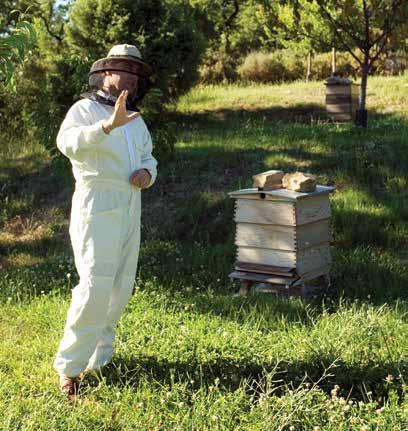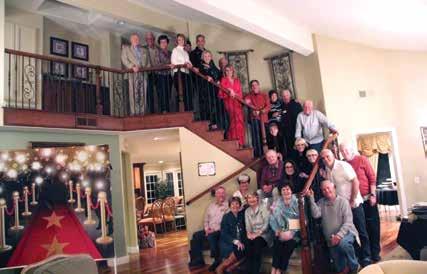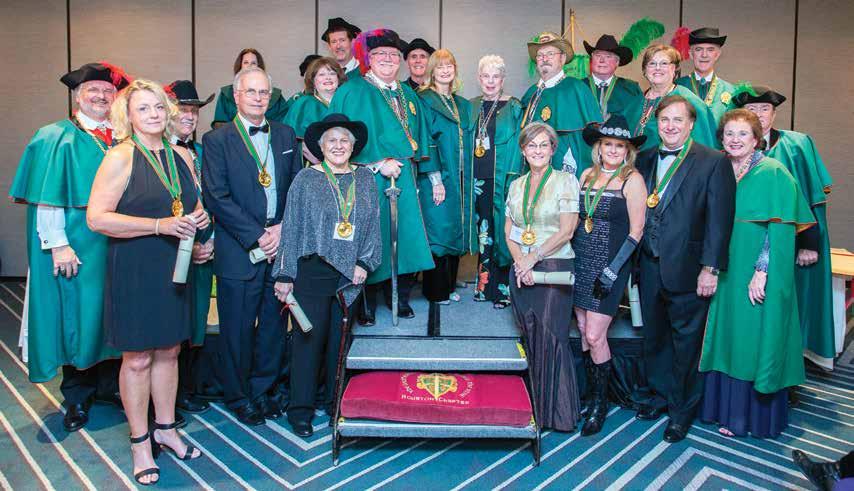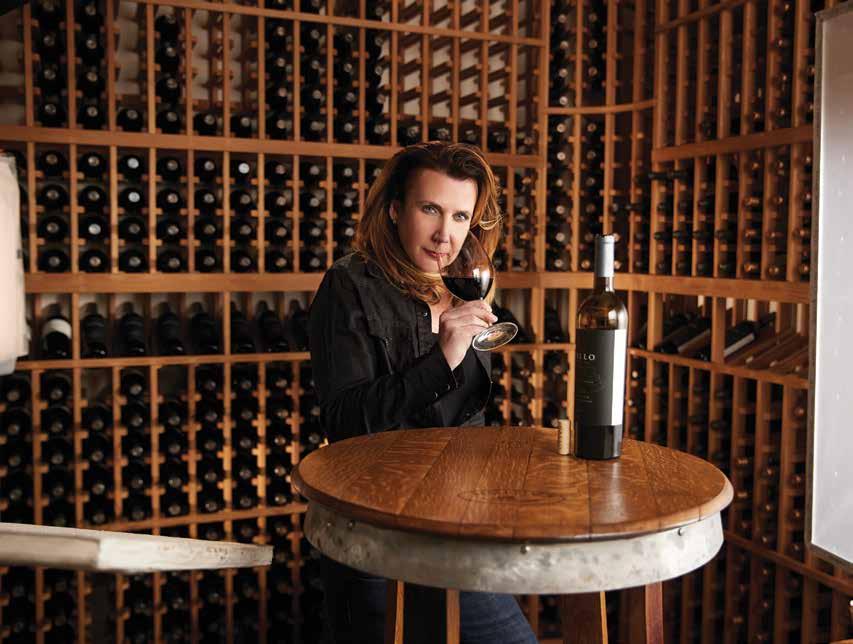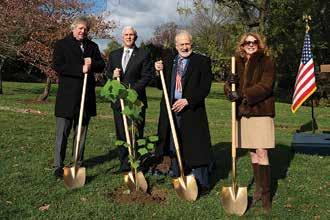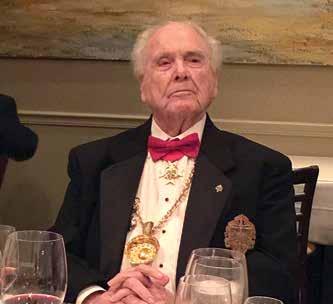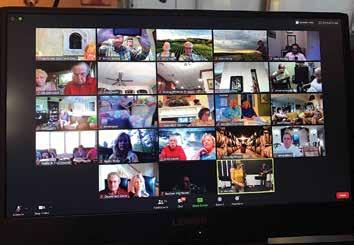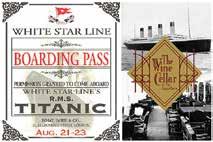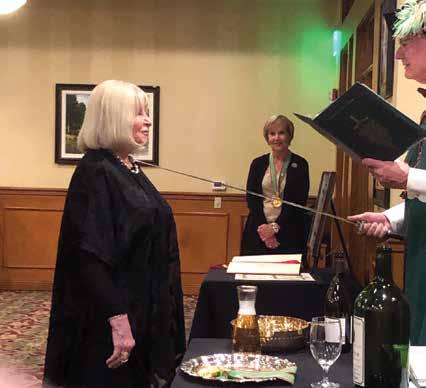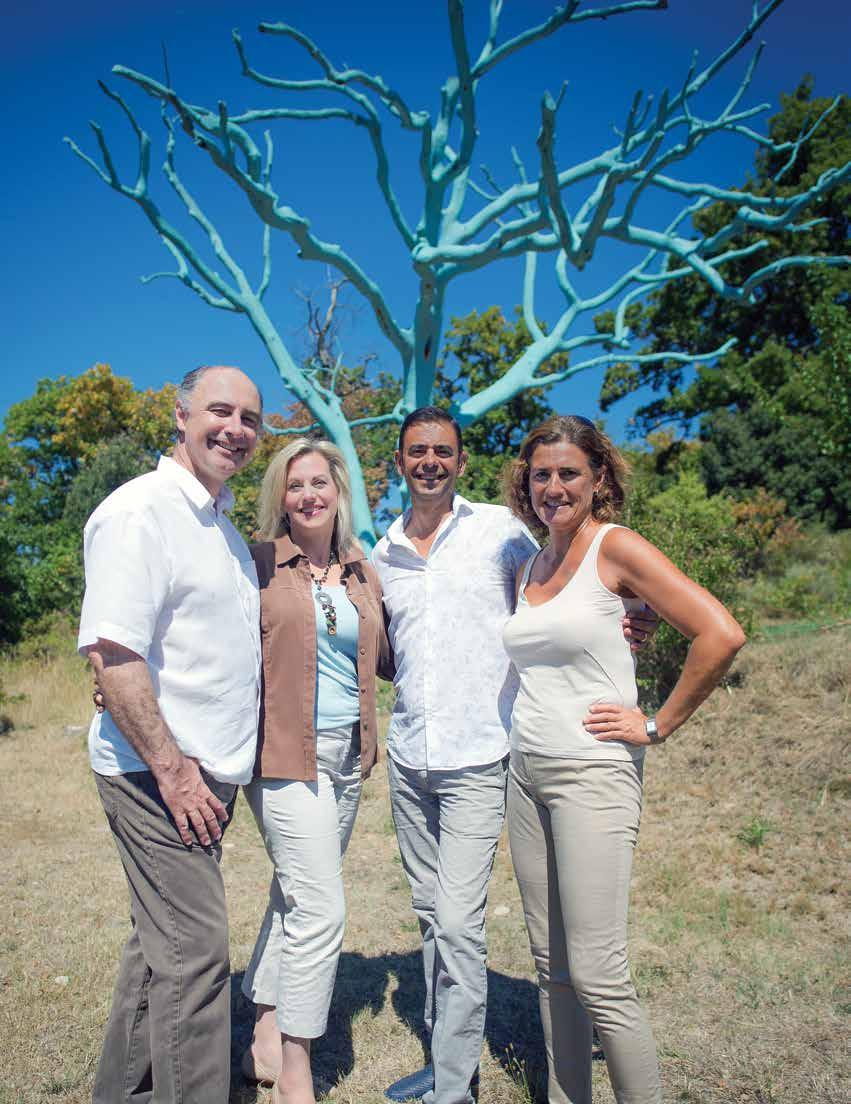
11 minute read
Romancing the Rhone
Xavier and Nicole Rolet pictured in front of the Chêne Bleu with Xavier’s sister, winegrower Bénédicte, and her husband, winemaker Jean-Louis. The Chêne Bleu or blue oak that symbolizes the Rolets commitment to protecting and preserving the beauty and authenticity of the historic site.
There’s nothing like a love story to capture our hearts and imagination, and Nicole and Xavier Rolet’s love story is nothing short of remarkable! Their romance has taken them across continents, time zones, language barriers, cultural traditions, weather challenges, geopolitics, global economies and now Covid.
They are a power couple who are passionate about fine wine, the best in organic, biodynamic and sustainable wine making practices and the restoration and preservation of an ancient property called La Verrière.
Xavier is a Frenchman by birth with a career in international finance. He was the former CEO of the London Stock Exchange. Nicole’s parents are French-Italian and American. As a child she attended French Lycees in New York and Milan, and spent time in Germany, Spain and Brazil. She attended Vassar College. Her professional life was in publications, investment banking and think tanks in the United States and the United Kingdom.
In 1994, Xavier purchased the 340-acre La Verrière that is located on a secluded mountain in the southern Rhône in the foothills of Mont Ventoux, in the Vaucluse region of Provence, France.
When Xavier and Nicole married in 1997, Xavier’s enthusiasm and enchantment with La Verrière had rubbed off on Nicole. They were both passionate about honoring the integrity, beauty and history of La Verrière and its vineyards. Using their combined expertise and resources, they worked round the clock to accomplish and expand that goal and to build and launch Chêne Bleu as a state-of-the-art winery.
The earliest written records about La Verrière date back to 1026, when it was used as a farming priory and working vineyard. Later, it was taken over by the Knights Templar, and in the 1400s, the priory was named La
By Rose Betty Williams
Verrière, which means glassblowing workshop. When the Rolets acquired La Verrière, it had been abandoned for more than 50 years and was in ruins.
The Rolets were determined to do everything possible to restore the ancient priory and nurture the neglected vineyards back to health.
Today the Rolets are enjoying the fruits of their labor. Chêne Bleu wines are acclaimed for the aromas and flavors of the southern Rhône, the finesse of the northern Rhône and the aging potential of the region’s finest AOCs. The Wall Street Journal described Chêne Bleu as “stunning grace and freshness…the world’s first Super Rhône.”
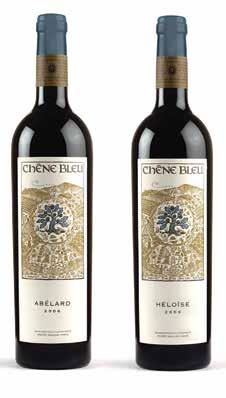
When Nicole attended the 49th FICB International Congress in Napa/Sonoma hosted by our KOV brotherhood in 2016, she brought Chêne Bleu wines with her. Everyone fell in love with the wine and with Nicole. I had the good fortune to sit next to her at a luncheon at the Culinary Institute of America and then again at the finale dinner at Jean-Charles Boisset’s Buena Vista Winery. She encouraged us to visit, and indeed we did in September 2019. La Verrière is idyllic and absolutely beautiful! This September, when we wanted to return for Chêne Bleu’s 2020 Harvest, Covid put an end to our travels. However, we were able to talk with Nicole, celebrate Chêne Bleu’s excellent harvest and retrace the Rolets’ love story and their romance with the Rhône.
Nicole hand sorting grapes during the September 2020 harvest

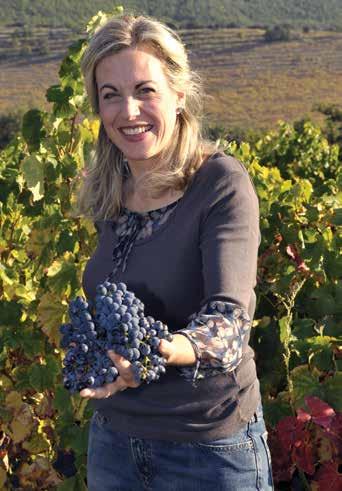
I asked Nicole how she and Xavier actually met. She replied that it was at a wedding. “I met this fascinating young Frenchman named Xavier Rolet who seemed wise beyond his years. He was living in London and I was in New York and soon after the wedding he came to visit me in New York and took me out on our first date,” she said. “We spent the first part of the evening talking about lovely personal things, and it was all going swimmingly. Then the plot thickened. Xavier shared with me that he had just started a crazy project that was going to change his life forever. He explained that he had just committed the next 25 years of his life to turning around La Verrière, an incredible vineyard that was a diamond in the rough. His plan was to unleash its hidden potential that somehow no other French people had appreciated in many decades.”
Nicole became a bit apprehensive because she didn’t know much about winemaking. Her mother had been a food critic and her father a wine collector so she had spent many delectable hours in fine restaurants, but it had never occurred to her to actually try her hand at making wine. She also was skeptical that La Verrière was truly the hidden gem Xavier described. “That was underestimating Xavier, which I have since learned that one should never do”, Nicole added. Xavier was recovering from a heartbreak and rather than drown his sorrows in wine, he decided to drain his bank account by purchasing a vineyard. He went on a quest for the ultimate site in the usual places, when by chance he noticed a weathered photograph in the window of a real estate agency: “30 hectares of old vines surrounded by 100+ hectares of forest, high in the mountains above Gigondas in Southern Rhône in the heart of the protected UNESCO biosphere reserve of Mont Ventoux, an abandoned medieval priory…” all for the price of two hectares in Châteauneuf-du-Pape! “It sounded too good to be true, but he made his way up the winding road and instantly fell in love,” Nicole commented. “This must have jump-started his heart again because just three months later we met” and three years after that Nicole and Xavier married at La Verrière.
Xavier’s dream to revive the neglected vineyards was propelled by a family tradition of winemaking in the Jura. When he purchased the vineyard, it was planted with old vines, mainly Grenache (now 45+ years) and Syrah (35+ years). “We were lucky to be joined by his wonderful sister and winegrower Bénédicte Gallucci, and her husband Jean-Louis Gallucci, a talented winemaker,” said Nicole.
Together they carefully evaluated and restored every vine they could and planted new Grenache and Syrah vines made with cuttings from existing vines. They also decided to include new vineyard plantings of traditional Rhône varieties such as Roussanne, Marsanne, Viognier, Clairette, Mourvèdre, and Vermentino. “At this stage I had not yet gotten bitten by the wine bug and busied myself restoring the ruins of the priory, which had no water nor electricity” Nicole noted.
In 2006, the Rolets formed Chêne Bleu, and from the get-go it was run on organic, biodynamic and sustainable principles. Nicole pointed out that was before it was fashionable. They spent 12 years resuscitating the old Syrah and Grenache vines. “I think, in retrospect, it is fair to say the unusual minerality, tautness, elegance and aging potential of Chêne Bleu’s first vintages redefined the potential of high-altitude sites from the very first vintage,” Nicole said. “The exposed prehistoric soils in the foothills of Mont Ventoux, above Châteauneuf-du-Pape are now recognized as containing a treasure-trove of exciting minerals. This, combined with the pronounced altitude, gives a distinctive finish and freshness to the wines, which has helped propel the reputation of the Ventoux as a rising star among French appellations; the ‘next hot thing’ according to critics such as Jancis Robinson.” At Chêne Bleu, observing the 1000+ years of the site’s history is very important to the Rolets. “We became driven by one guiding principle - that of ‘balance and harmony’ where the winery, its people, and nature remain in healthy, sustainable equilibrium,” explained Nicole. “The rigorous organic and biodynamic practices were expensive to implement and stressful to manage at the beginning, and while we made a number of mistakes in the process, we also found very exciting solutions.”
They experimented with natural products and composts, used the apiary’s bee propolis as a natural disinfectant and brought in a flock of sheep to provide grass and weed control throughout the vines. The Rolets are consistently seeking out world-class experts on sustainable and biodynamic cultivation practices for new methods that can be applied to the winery.
Their guiding principle is to harness the forces of nature that surround them at La Verrière that is at the top of the mountain in the heart of the forest. “For example, the Biosphere boasts 1400 species of butterflies and the woods are pullulating with animals and we love that there is a seamless integration between the vineyard and the forest,” said Nicole. “In fact, to monitor the ecosys-
Aerial view of La Verriere
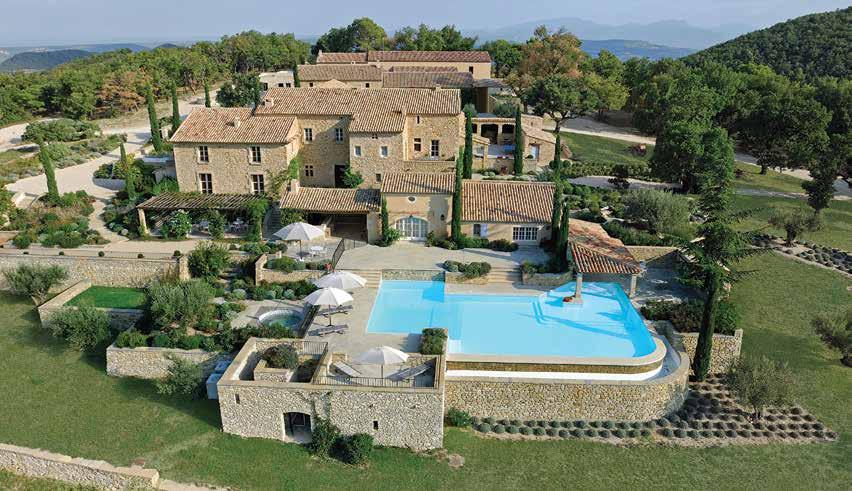
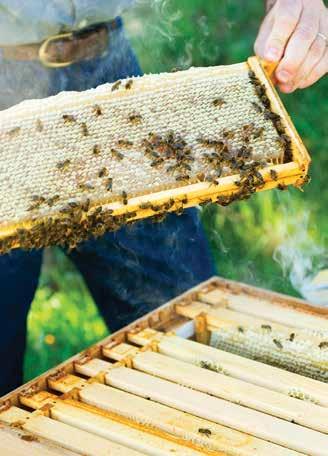
Sheep provide grass and weed control throughout the vines
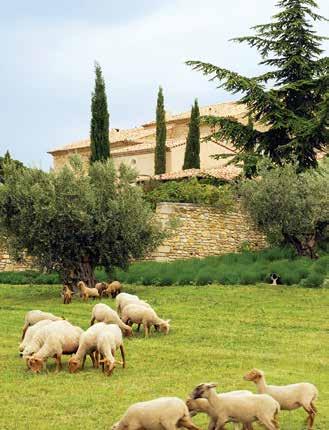
tem, it is customary to count the population of rabbits and hares, which are halfway through the food chain between the predators and the creepy crawlies, to check for imbalances. We even have a reference to that on our wine label with a little bunny hunt”.
Asked why the name Chêne Bleu, Nicole said, “If you visit Chêne Bleu, you will be greeted by a mighty blue oak tree, or ‘chêne bleu’. The tree perished from drought in 2005 but has remained an integral part of La Verrière’s history.” The Rolets commissioned Provençal tree sculptor, Marc Nucera, to transform it into a stunning piece of natural art, painting the trunk and branches with blue green bouillie bordelaise, a protective solution used in organic vineyards. When the Rolets decided to name the wine Chêne Bleu, the blue oak became the symbol for their commitment to protecting and preserving the beauty and authenticity of the historic site. The blue oak is on every Chêne Bleu wine label.
The names for Chêne Bleu’s flagship red wines are Abélard and Héloïse and are inspired by the famous medieval lovers often referred to as the “Romeo and Juliet of France”. “We fondly conjoin them into ‘Abelise’, as is customary these days for power couples” Nicole noted.
Abélard was a philosopher whose passionate romance with his brilliant student, Héloïse, condemned them both to forced separation and ultimate tragedy. However, their love endured decades of seclusion through the exchange of exquisitely written letters. Chêne Bleu’s Abélard and Héloïse cuvées are derived from mature Grenache and Syrah vines, blending the best of both worlds: the rich fruit of the South of France with the freshness and minerality of the Mont Ventoux altitude. Abélard is Grenache-based with a touch of Syrah and its flavor is opulent and concentrated, muscular and brooding. Nicole described it as an unusual example of mountain Grenache, rich and dense but not heavy. She described Héloïse as an elegant and refined Syrah-based blend with one third Grenache and a touch of white - Viognier or Roussanne depending upon the vintage - in the spirit of the cooler Northern Rhône, like a Côte Rôtie, but with her own identity.
Chêne Bleu also produces a rich, oak-aged Roussanne blend with a touch of White Grenache and splash of Marsanne. It is named after Aliot de Montvin, the glassblower who purchased the property in 1427 and changed its name to La Verrière. The high altitude and protracted ripening season led the Rolets to consider planting whites, despite the southern latitude. Many people discouraged them because it was not customary, but fortunately they followed their own judgment, and their flagship white has won distinguished awards from its first vintage. “The rich fruit concentration and freshness take oak well so we decided to make a real vin-de-garde,” said Nicole.
Nicole encourages everyone to visit. La Verrière, the part of the property that encompasses the restored priory, has established a reputation as one of the leaders in the region for oenotourism, winning the prestigious Terre de Vins trophy for best wine tourism in France in 2020. Today it operates as a small eco-luxury retreat focusing on wine hospitality, using sustainable practices. La Verrière welcomes guests who want to rent a single room or the whole property for family and friends in Provence.
“We offer a large list of activities for visitors including daily guided cellar tours, SustainaBEElity tours, wine tastings, cooking courses and much more,” she said. “Our on-site award-winning chef serves several lunch options daily under a vine-covered terrace using ingredients from our own organic and ethically grown vegetable garden, carefully paired with our wines.
Last but certainly not least, Chêne Bleu also offers an intensive educational course entitled The Extreme Wine Experience, in partnership with the Wine and Spirits Education Trust (WSET). This six day course, renowned as the best of its kind, combines wine theory and practice and is open to enthusiasts of all knowledge levels. Nicole said she likes to think of it as a “boot camp” for serious wine enthusiasts, as it includes intensive tastings of more than 100 benchmark wines from around the world, lectures and trips to noteworthy producers in the region, and hands-on opportunities in the vineyards and winery at La Verrière.
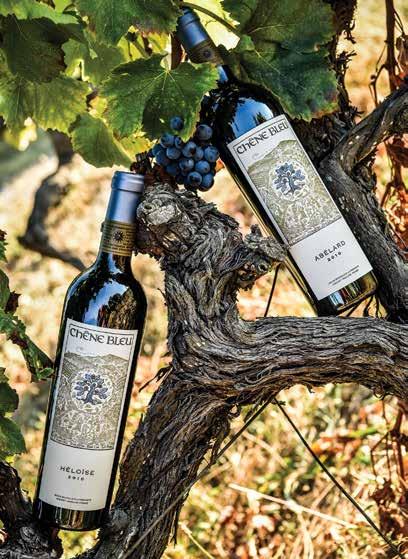
Our unique biosphere - Xavier with bee hive
